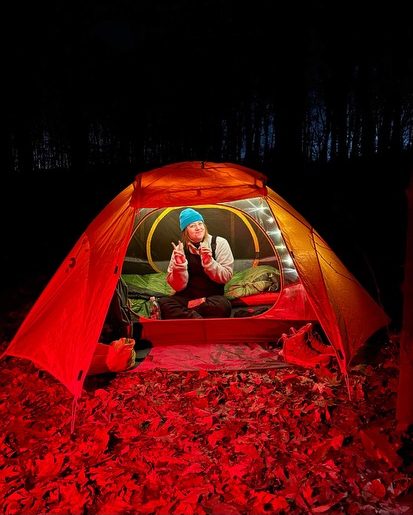Continuing our talk about the Big Three, but with focus on the sleep system. We started with the sleeping bag but now we are moving to the sleeping pad.
Sleep in the backcountry is essential to having the energy to finish out your hike.
As I mentioned before in the previous gear talk, sleeping bags are an important part of your sleep system. However, the second item recommended to have is a sleeping pad.
Sleeping pads are beneficial because they add comfort and elevate the hiker from the ground. This helps to add a higher R-value or better known as insulation. The higher the R- value, the warmer you will be.
There are several things you want to consider when choosing a sleeping pad: overall comfort, weight/pack size, durability, ease of inflation, insulation provided, temperature of where you will be camping (R-value), correct shape, and correct size.
The three types of sleeping pads are closed cell foam, self-inflating and air.
Foam sleeping pads are known as the original because they have been around the longest and typically what people use when starting to backpack.
These pads are lightweight and durable, but bulky and not as comfortable as air pads. However, the bright side to this pad is they are budget friendly, and you do not need to worry about punctures or leaks.
Closed cell foam pads can be used under air pads to higher the R-value rating and save your air pad from being punctured.
Foam pads are the only sleeping pads that can be outside of your pack as well.
A different type of sleeping pad is self-inflating, which is a combination of air and foam. These pads are ideal for car camping and front country camping.
Self-inflating pads can be used for backpacking, but they are heavy and bulky which isn’t ideal. When opening the values, the foam will expand, and air will automatically go into the pad.
These pads are more durable than air pads but weigh more and are more expensive.
The last type of pad is air, the most ideal and lightweight one to take when back country camping.
Air pads are great because they can pack down easily and they usually are extremely light. The downside to these pads is they are noisy and have the potential to be punctured.
Air pads tend to be on the more expensive side depending on the brand you buy and type of R-value you are looking for.
I use the Big Agnes Rapide SL which has an R-value of 4.8 and is considered to be three seasons. I used this pad for winter camping, and it kept me relatively warm. However, if there was more snow on the ground or if it was frozen, I feel like I would’ve been miserable.
It’s always important to do your own research before buying your gear. Everyone is different so what might work for me, might not work for you.








